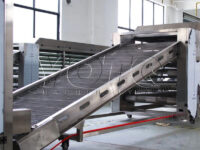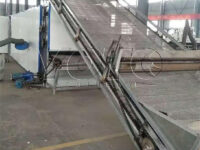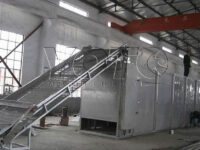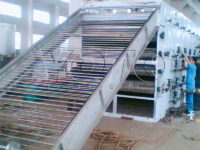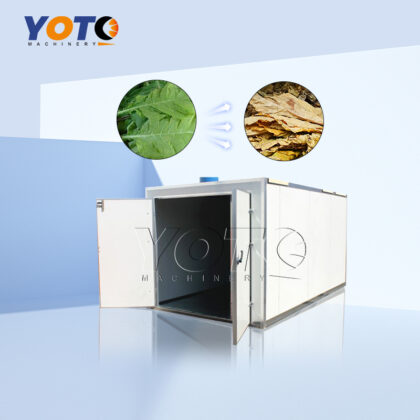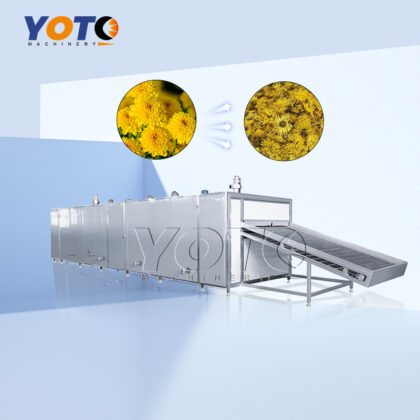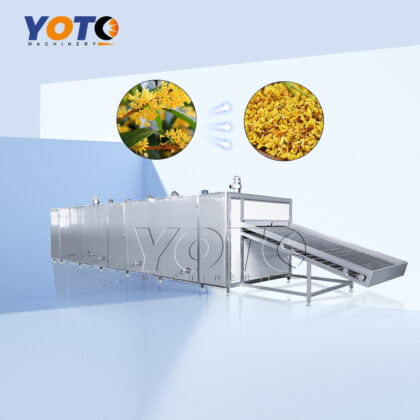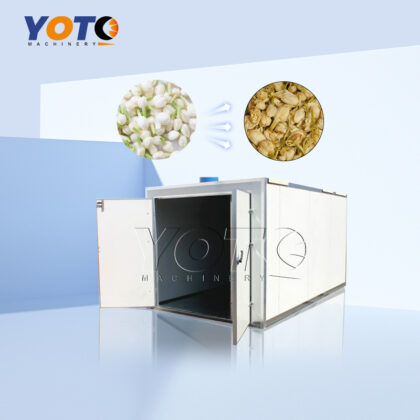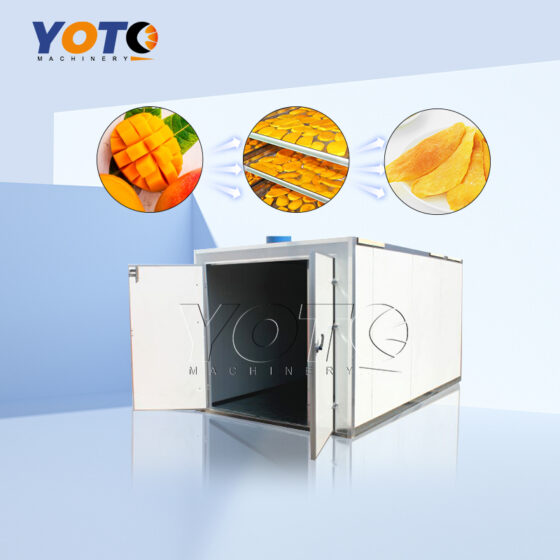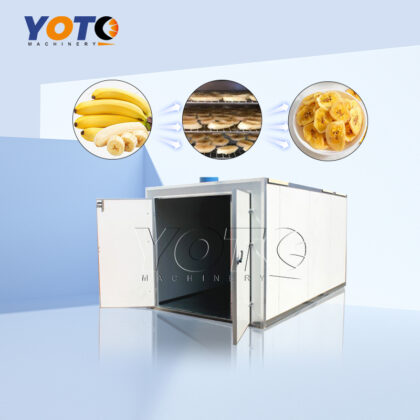Tea is a raw material with a rich cultural history and health benefits. Its wide variety of types and complex production process make it a unique and valuable beverage. Brewing and drinking tea not only allows for the enjoyment of its flavor, but also provides numerous health benefits.
Our mesh belt drying equipment is expertly crafted to meet a variety of output requirements. It features automatic feeding, discharge, and control, as well as low heat consumption, high production efficiency, simple operation, easy maintenance, and a wide range of applications. The equipment comprises a belt conveyor, automatic feeding machine, drying machine, and other top-of-the-line components. It effectively removes moisture and achieves drying by utilizing the contact movement between hot air and wet material. The main heating methods, which include electric heating, steam heating, and hot air heating, are all highly efficient.
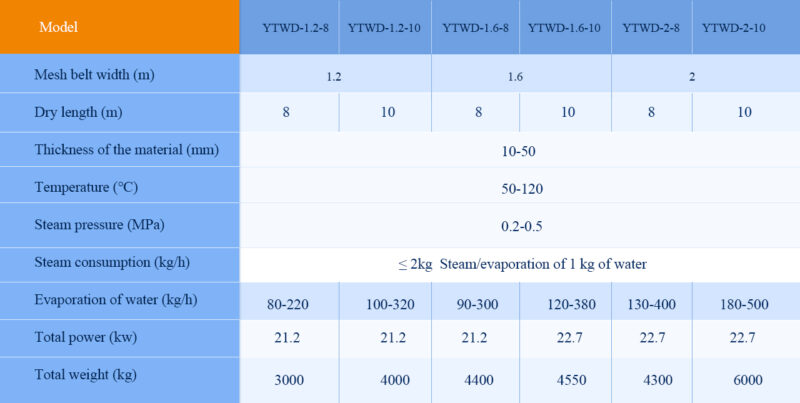
1. Large capacity: The mesh belt dryer provides continuous and automated production, with rapid dehydration speed, brief drying time, and high output.
2. High quality: The materials will maintain their shape, brightness, and colour.
3. Clean and sanitation: The drying process is completed in a closed box, ensuring protection from external pollution.
4. Intelligent and controllable: The equipment is highly automated and easy to operate. You can adjust the drying area, air pressure, air flow, drying temperature, and belt running speed with ease.
5. Wide usage:This phrase is suitable for material from any field.
6. Flexible mobility, and simple installation.
Step 1: Fresh tea leaves are plucked, petioles, yellow leaves and broken leaves are removed, and neat, tender green leaves are retained. The sorted tea leaves are put into a tea roaster for pre-treatment, generally there are steps such as killing green, rolling or twisting and fermentation, these steps will make the tea release its aroma and improve its taste.
Step 2: To dry the tea leaves put them in the drying equipment and adjust the temperature and time according to the instructions provided. Be sure to evenly distribute the leaves on the tray to ensure they dry evenly. It’s best to use temperatures between 176°F (about 80°C) and 212°F (about 100°C). The drying time ranges from a few minutes to a few hours.
Step 3: It is recommended to check the condition of the flowers regularly and adjust the drying time as needed.
Step 4: Once the tea leaves have finished drying, take them out and let them cool. To extend their shelf life, store the dried tea leaves in a cool, dry, and well-ventilated container, away from direct sunlight and humidity.
Users can adjust the drying process according to their needs during actual use.
Fruit: Mango, banana, apple, strawberry, grape, lemon, longan, apricot, fig, tangerine, persimmon, pineapple, rosa roxburghii tratt, golden berry, grapefruit, loquat, cantaloupe, wax berry, start fruit, pawpaw, lychee, jackfruit, pitaya, arecanut, etc.
Vegetable: Tomato, cassava, potato, chili, yam, mushroom, agaric, ginder, onion, garlic, radish, beet root, eggplant, bitter, oyster mushroom, pumpkin, etc.
Sea food: Sea cucumber, squid, fish, shrimp, kelp, etc.
Flower&Leaf: Rose, jasmine, osmanthus, chrysanthemum, tea leaf, tobacco, etc.




